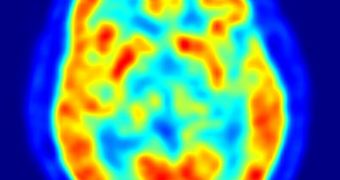Investigators at the University of Michigan in Ann Arbor say that an analysis of positron-emission tomography (PET) scans taken over the past 10 years recently revealed the approach to be very safe and accurate in discovering dementia affecting the human brain.
As an added bonus, PET scans also proved to be tremendously effective at finding Alzheimer's disease, a form of neurodegenerative dementia that mostly affects the elderly. Even if treated, the condition progresses relatively fast, and is largely fatal.
In a paper published in the January issue of the esteemed Journal of Nuclear Medicine, experts detail how they reviewed the scans. Even though the datasets were compiled as doctors were looking for other conditions, the U-M team sought to identify telltale signs of dementia.
An especially-effective form of analysis is a combination of PET imaging and 18F-FDG, an injected biomarker that highlights areas of metabolic decline. The positron-emission data provides the essential part of the data, namely functional images of biological processes, EurekAlert reports.
What makes the new work so appealing to healthcare experts is the fact that dementia cannot regularly be identified as a specific illness. Rather, it is a name given to a pattern of symptoms, whose main manifestation is cognitive decline.
As such, being able to detect it accurately would help improve patients' quality of life. Most often, the disease is only identified once it's taken hold in the brain. Such is the case with Alzheimer's, which is tremendously difficult to detect early on, before it starts producing neural damage.
“The new data support the role of 18F-FDG PET as an effective addition to other diagnostic methods used to assess patients with symptoms of dementia,” U-M expert Nicolaas Bohnen, MD, PhD, explains.
He holds an appointment as a professor of radiology and neurology at the university, and was also the lead author of the JNM study. The expert says that the new investigation could help people suffering from dementia with Lewy bodies and frontotemporal dementia as well.
“The review also identified new literature showing the benefit of this imaging technique for not only helping to diagnose dementia but also for improving physician confidence when diagnosing a patient with dementia,” Bohnen explains.
“This process can be difficult for physicians, especially when evaluating younger patients or those who have subtle signs of disease,” he concludes.

 14 DAY TRIAL //
14 DAY TRIAL //